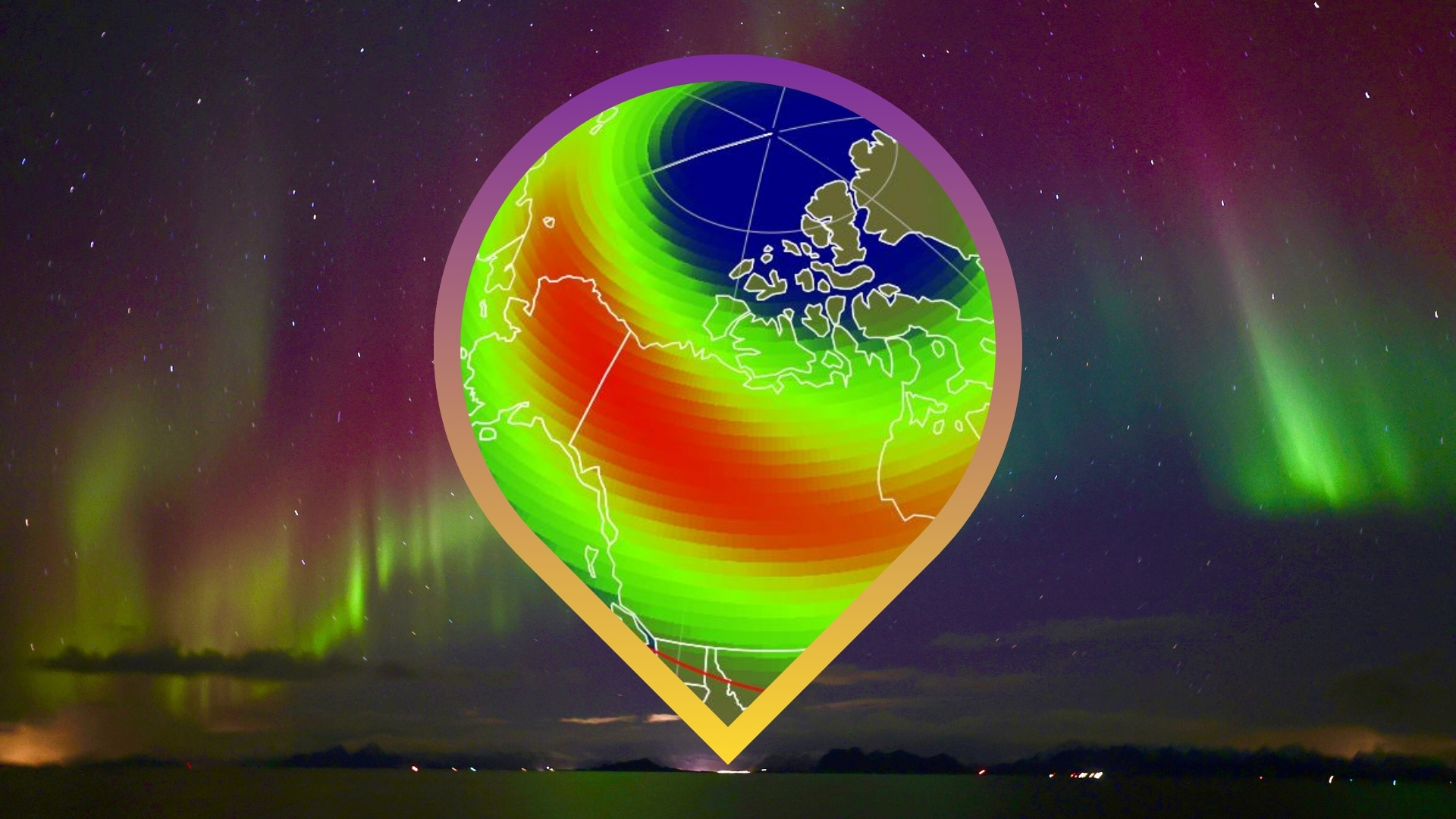How Apollo 8 Morphed Into a Moon Mission: Exclusive Clip
Apollo 8 was originally not supposed to go to the moon.
NASA's bold decision to send the Apollo 8 mission around the moon — instead of sticking around Earth to do more testing — comes to the fore in an exclusive clip from the PBS special, "Chasing the Moon."
The agency's bold move worked well, as Apollo 8 successfully orbited the moon from Dec. 24 to 25, 1968 before returning to Earth safely. But it only happened after careful planning and consultation with the crew, the new clip shows.
"Chasing the Moon" premieres July 8 to 10 (all nights at 9 p.m. EDT) on PBS, just days before July 20, the 50th anniversary of the first moon landing. The series covers the activities leading up to the Apollo 11 moon landing that took place 50 years ago, on July 20, 1969. PBS provided this clip exclusively to Space.com.
Related: Apollo 11 at 50: A Complete Guide to the Historic Moon Landing Mission
In the clip, Apollo 8 mission commander Frank Borman recalls being in ground testing for the spacecraft in August 1968 in Downey, Calif. when he received a call from Deke Slayton, who was director of flight crew operations for the mission. Slayton wanted him to return to Houston — the hub of astronaut training — right away.
"So I got on an airplane, got back and I walked in the door," Borman said, then laughed. "I remember Deke said, 'Close the door.' "
NASA had been tipped off by the Central Intelligence Agency that the Russians were planning their own moonshot with humans on board, and that a crew had been selected. What few knew at the time was testing of the Soviet Union's massive N-1 rocket was not going well; it ended up failing so many times that eventually, the Soviets abandoned their human moon mission plans.
Breaking space news, the latest updates on rocket launches, skywatching events and more!
But that wasn't clear to the U.S. in mid-1968, which was under a presidential directive to get humans on the moon ahead of the Soviets before the end of the decade, to demonstrate technological superiority in space. The Space Race, as this was called, was a key aspect of the Cold War between the Soviets and the Americans. (Eventually this tension cooled, accelerating when the Soviet Union dissolved; today U.S.-Russian collaboration is an everyday occurrence in space and on the International Space Station.)
In 1968, however, the Soviets appeared to be moving ahead of the United States — again — after flying the first satellite and first astronaut and having several other "firsts" in the early space race.
"He [Slayton] wanted to know if we could move our mission from a February or March launch to a December launch, and if we could retrain ourselves," Borman said. Although the crew only had about five months to get ready, his answer was simple: "I said, 'Yes we could.' "
Apollo 8 was originally envisioned as the next level of testing after Apollo 7, which did a shakedown of the command module in Earth orbit earlier in 1968. But Apollo 8's plans to test the lunar module in Earth orbit were not going well, as the spacecraft was behind schedule. So the decision was made to fly Apollo 8 to the moon without the lunar module. (Apollo 9 picked up that testing instead in 1969.)
History shows us that could have been a risky decision; in April 1970, the moonbound Apollo 13 command module suffered an explosion, crippling its power and oxygen generation; the astronauts survived the trip home by using their attached lunar module as a lifeboat. Apollo 8 didn't have that backup. But in the context of how the team was doing in 1968, Borman said he was 100% confident of their return.
"If I didn't think I was coming back, I wouldn't really go," he said. He added that his crewmate, Bill Anders, pegged their odds of success at about 30%. "But he's more analytical than I am," Borman explained.
The clip shows the astronauts riding zip lines in training, to practice procedures for escaping an exploding Saturn V — the monster 363-foot (110-meter) rocket that would bring Borman, Anders and Jim Lovell to the moon. It was the first time this rocket was tested with humans on board. "It was a big rocket full of very explosive stuff," Anders said over footage of his crew doing the tests.
But when it came to the focus for the mission, Anders appeared to trust the team on the safety aspect and work on the matters he could control. He hearkened back to his pilot training; most astronauts in the program at the time hailed from the military and usually had extensive fighter pilot and test pilot experience.
"The last thing we want to do is screw up," Anders said of his thinking 50 years ago. "We'd rather die than screw up — a standard fighter-pilot view."
- 'Apollo's Daring Mission': NASA's Epic Apollo 8 Moonshot Stars in PBS Documentary
- Watch the Apollo 8 Crew Recount Their Historic Moon Mission in This Epic NASA Video
- Apollo 8: NASA's First Crewed Trip Around the Moon in Pictures
Follow Elizabeth Howell on Twitter @howellspace. Follow us on Twitter @Spacedotcom and on Facebook.

Elizabeth Howell (she/her), Ph.D., was a staff writer in the spaceflight channel between 2022 and 2024 specializing in Canadian space news. She was contributing writer for Space.com for 10 years from 2012 to 2024. Elizabeth's reporting includes multiple exclusives with the White House, leading world coverage about a lost-and-found space tomato on the International Space Station, witnessing five human spaceflight launches on two continents, flying parabolic, working inside a spacesuit, and participating in a simulated Mars mission. Her latest book, "Why Am I Taller?" (ECW Press, 2022) is co-written with astronaut Dave Williams.
